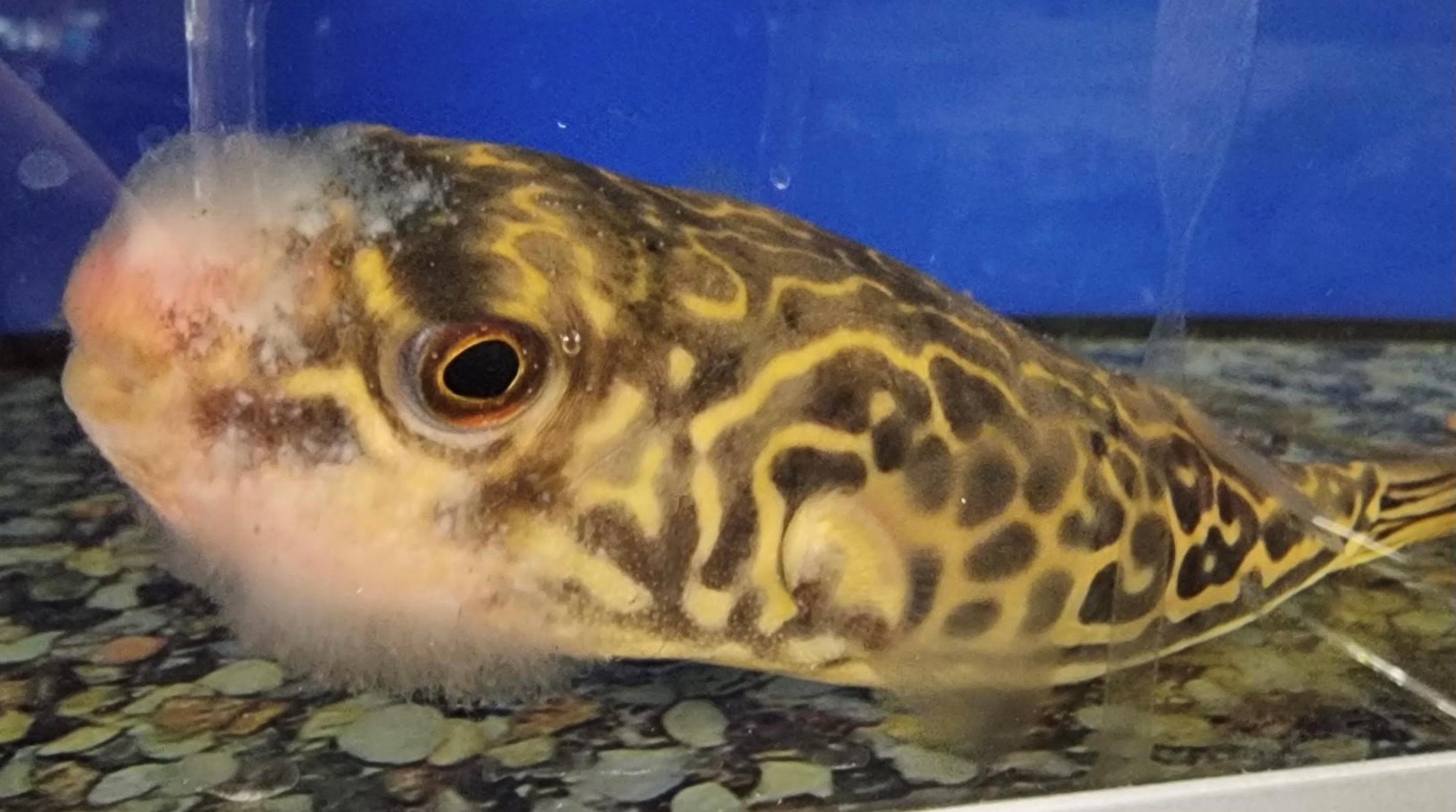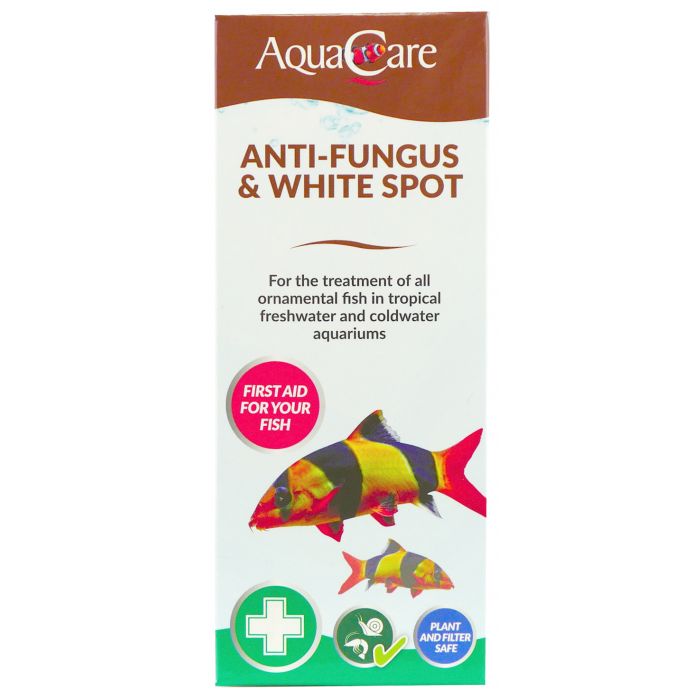Diseases In Fish: Fungal Infections
Fungus, or Cotton Wool Disease is usually caused by Saprolegnia and tends to attack damaged tissues.

Usually seen in freshwater fish, fungal infections commonly occur as a result of physical trauma caused by fighting, spawning or injuries caused by predators.
Infection is more likely to occur when the immune system of the fish is weakened due to stress. Background populations of opportunistic fungal pathogens can be found in detritus and organic wastes in many systems, so good hygiene and maintenance is important in preventing outbreaks.
In ponds especially, fuzzy/furry fungal infections can be colonised by algae growth, giving them a green hue. Inexperienced pond keepers occasionally report blanketweed growth on fish and this is an easy mistake to make.
Fungal infections usually occur on weakened fish and can seem very debilitating as a result. The first stage of treatment is removing the root cause of the problem and this often means seperating victims of bullying, or female fishes receiving excessive attention from hormonal males. A hospital tank is a good idea in these circumstances and allows a weakened fish the opportunity to rest. As with any aquarium, it’s important to avoid exposing ailing fish to poor water quality which will compromise their immune response even further. Some bacterial infections will also present similar symptoms – so called ‘false fungus’ but will usually respond to the same medications.
Adding additional aeration in the form of an air stone can be beneficial, especially for fish which may not appreciate the extra current generated by stronger water movement due to their reduced vigor. As some of the chemicals used in medications can lower dissolved oxygen levels, this is good practice as part of a standard treatment plan.
Be aware that chemical media such as carbon will absorb some or all the active ingredients of medications and should be removed before use.

Anti-Fungus & White Spot
For the treatment of all ornamental fish in tropical freshwater and cold water aquariums.
Anti-Fungus & White Spot is a 7-day course of treatment which will eradicate all stages of White Spot and fungus.
Diagnosis Guide: Fish have fuzzy ‘cotton wool’ growths on body or fins, usually associated with injury or damage.
Poor water quality can be the primary cause of stress and disease in fish, so always use aquarium test kits to monitor your water conditions.
Directions:
1) If you require help to calculate the volume of water to be treated please ask at your nearest Maidenhead Aquatics store. Note that aquarium decor such as rock work and gravel will impact on your tank’s capacity by displacing water - failing to take this into account can lead to overdosing.
2) Shake the bottle thoroughly before use.
3) Mix the required dose of treatment with 1 litre of aquarium water.
4) Add this diluted mix slowly to the aquarium where water movement will ensure good circulation and rapid distribution.
5) Repeat dose every other day for 7 days (ie. days 1, 3, 5 and 7).
6) Treatment can be repeated 7 to 10 days after the last dose. If repeat treatment is required ensure diagnosis is correct, check water quality and carry out a partial water change between treatments (up to 25%).
Dose: 10ml to 200 litres of aquarium water
Repeat the dose every other day for 7 days
When used at the recommended dosage rates, this product is safe to use with invertebrates such as shrimps and snails.
Use with Freshwater stingrays (Potamotrygon) is not recommended. For sensitive species, doses can be administered as two halves added several hours apart to ensure the safest dilution rate. Deliberate under-dosing is not recommended, as this can encourage resistance in target pathogens.
After treatment, it’s important to provide a good nutritious diet to ensure healthy regrowth of tissues with minimal scarring or deformity. Damage to areas such as the base of the tail will often cause permanent loss of finnage, such individuals will usually cope well but may be disadvantaged in very competitive communities and require quieter surroundings in order to thrive.
If the initial damage was caused by compatibity issues, then these will need resolving before putting a healed fish back in harm’s way. In the case of spawning goldfish, it might be necessary to add more females or additional plant cover to avoid excessive harassment.


